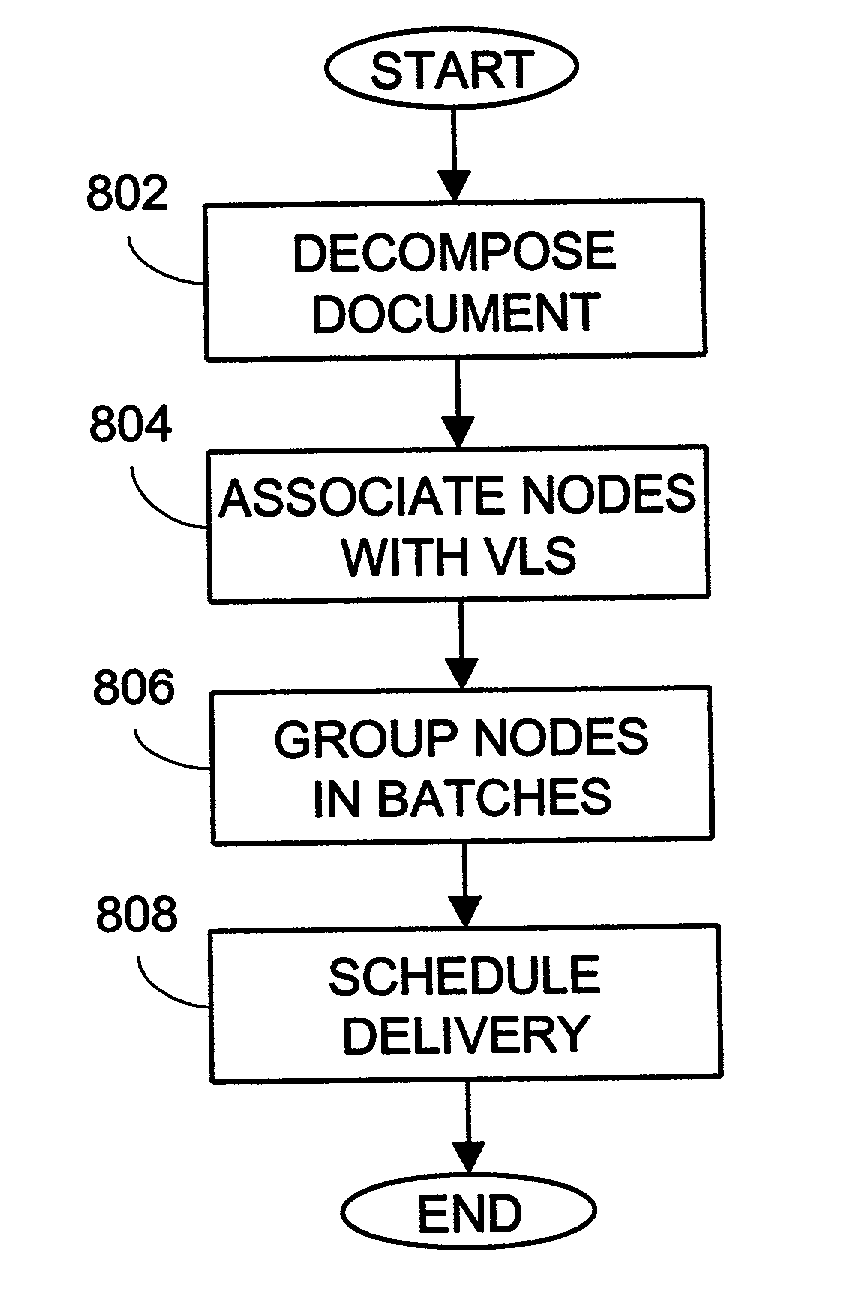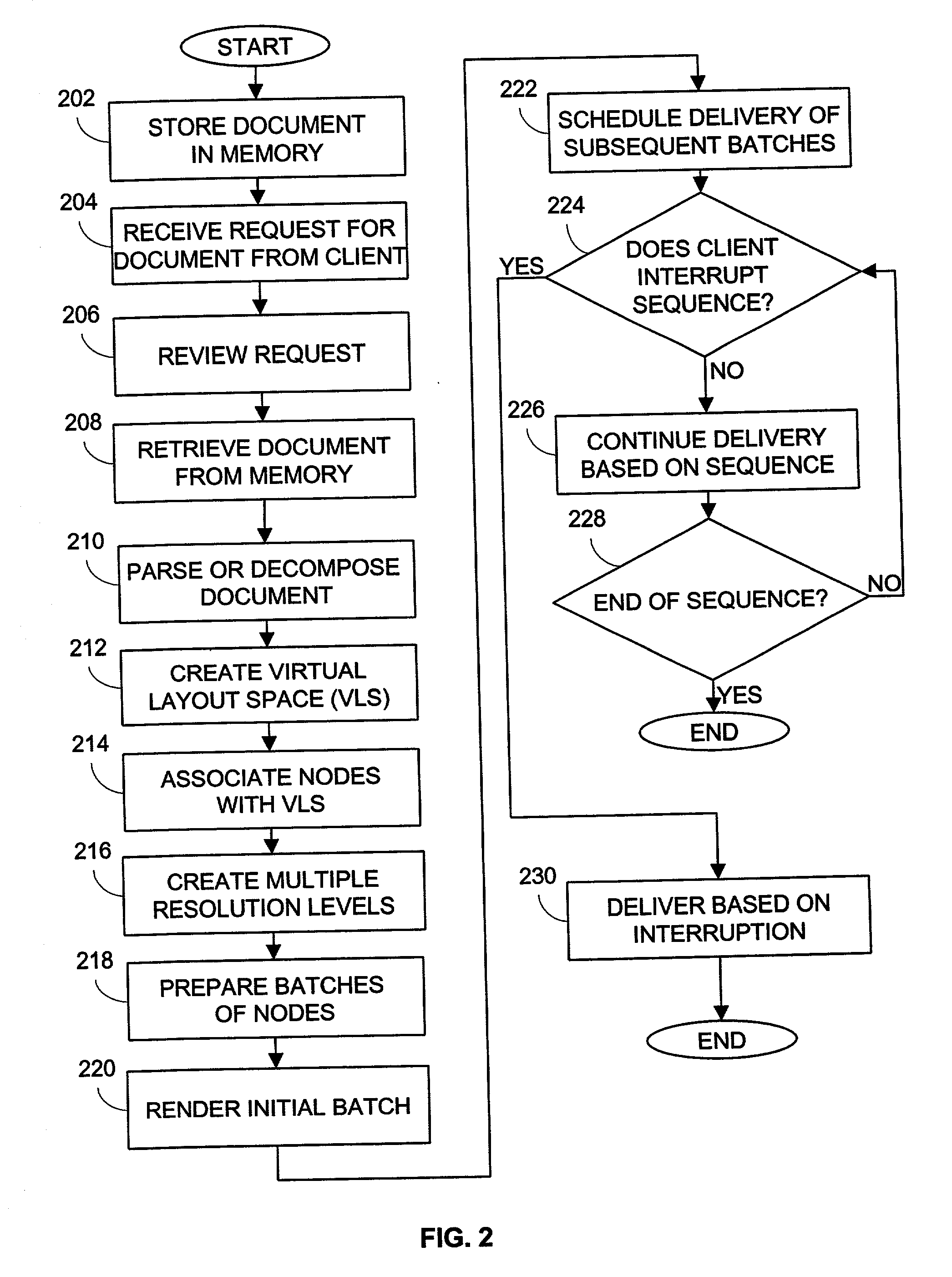Since the introduction of the first widely adopted
HTML browser, Mosaic, the need for speeding-up the deliver of
HTML documents over
the Internet has been a prevalent problem.
Sadly, however, average Internet connection speed has increased by a factor of only 2.times..
This imbalance has caused great stress in the kind and manner in which content is delivered and viewed over the Internet.
The result is that the general audience, who lacks high-speed
broadband Internet
connectivity, are forced to either view uninteresting content or experience unbearable download wait periods.
However, all existing solutions to the "
last mile" problem do not scale, as the amount of information grows or the
network connection slows down.
As a result, most web pages are not accessible for viewing by "thin" clients with lower bandwidths (9.6 kbps to 14.4 kbps
network connection speed) and smaller screen sizes (160.times.160 to 320.times.240).
Even if these
thin client computers can access the web pages, it often takes an impracticably long time to download.
The design and implementation of the second website can be very expensive and labor intensive.
As a result, users accessing the second website are often dissatisfied with the content they receive.
Ultimately,
wireless devices are basically limited to getting from the WWW text-based messaging, e-mails, and web clippings.
The inability to efficiently deliver
multimedia web pages to
wireless devices has led to development of new infrastructure.
The new infrastructure, either in hardware or
software, or both, can be very expensive.
That is, WAP devices never see the raw WML; they deal only with WML
bytecode.
As a result, WAP does not provide a complete solution for
thin client's access to the WWW.
Furthermore, WAP involves manual process, templates, preprocessing, etc., which can be expensive and labor intensive.
More importantly, users of WAP devices do not get the
web page that was originally designed.
In
spite of its industry support, the WAP / WML approach suffers from all of the usual difficulties associated with the imposition of new protocols that depart from tried-and-tested
software engineering practices.
(1) The
server is required to create WML versions of their
HTML pages, thus substantially increasing the labor and expense of maintaining web pages.
(2) WML allows only a very small set of
layout formats, making it difficult for servers to customize content, and increasing the likelihood that vendors will introduce their own extensions to the standard to fix the problem.
(3) Unlike HTML, WML has a very unforgiving
syntax.
It is possible for the
server to use
XML validators to check their WML (since WML is a subset of
XML), but this solution is less than ideal when the WML needs to be generated dynamically--from a
database, for example.
(4) Most egregiously, each WAP device has its own page-length limit on the amount of WML that it may receive.
(6) The protocol does not support cookies, making it impossible for the server to access persistent (longer than one session) information on the
client.
(7) There is still some resistance in the U.S. market to adopting the WAP / WML standards.
Indeed, not all of Phone.com's products are completely WAP compliant.
In addition, there are
client-side difficulties which include:
(8) Web pages viewed by clients are restricted to only a few limited formats (see
disadvantage number (2) above), and
monochrome images (see
disadvantage number (5) above). The
client's web-surfing experience is thus dramatically curtailed. At present, most users
restrict their use of this medium to
electronic mail and other text-based
processing, for precisely this reason. In short, clients simply do not see the real WWW.
(9) The lack of support for cookies means that clients must retype they user name and
password each time they open a new session with a secure
web page (see
disadvantage number (6) above). This is particularly unfortunate, given the relative difficulty of entering text on certain small
wireless devices.
The reality, however, is that not all information on the WWW is compressible or cacheable.
Furthermore, some information even if compressible and cacheable, can not be reduced to a satisfactory ratio.
As a result, compression and caching of the information provide inconsistent results.
Another disadvantage is that sometimes the compression modules have to be integrated into the documents.
Still another disadvantage is that caching has to be integrated within a
proxy server, a network server, routers, and other components.
As the ever-growing
pool of wireless users become increasingly frustrated with the limitations of WAP / WML, however, it is believed that the users will demand for such increased capabilities.
In a rare situation, a wireless telephones can have
network connection at 128 Kbps, but that connection can be prohibitively expensive.
Furthermore, the higher
network connectivity is available only in a limited number of metropolitans.
Another constraint associated with the Pocket PC is its CPU
clock speed.
 Login to View More
Login to View More  Login to View More
Login to View More 


